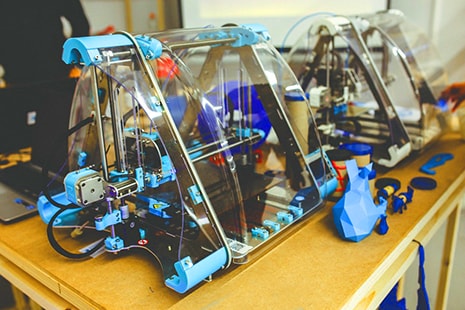Researchers develop first ever 3D printer able to generate synthetic human skin
Orange County, CA - January 25th 2017 - Since the initial passing of a 3D bioprinting technology patent in 2006, significant advances have been made in the field of tissue engineering. Different from plastic and metal 3D printers, bioprinting uses living cells layered on top of one another.Already proven useful in growing organ tissue, the technology is now being used to develop skin grafts. The collaboration between researchers from the Universidad Carlos III de Madrid, the Center for Energy, Environmental and Technological Research, Hospital General Universitario Gregorio Marañón, and BioDan Group, a bioengineering company, has enabled the development of the first 3D printer capable of producing human skin ready for transplant.
To create the skin, the printing device uses injectors filled with biological components, called biolinks, of different levels. BioDan Group holds the patent and license to CIEMAT, the program responsible for depositing the biolinks in the printing process. Replicating the natural structure of the skin, the human plasma-based material is bilayered. The synthetic skin’s external layer consists of the epidermis, stratum corneum, for defense against external forces, and a deeper internal layer, the dermis, that produces collagen giving the skin its strength and resilience
"Knowing how to mix the biological components, in what conditions to work with them so that the cells don't deteriorate, and how to correctly deposit the product is critical to the system," said co-author of the study Juan Francisco del Cañizo.

The team was able to create a standard P100 tissue culture plate of printed skin in under 35 minutes including the time it took for the fibrin gelation, proteins that promote wound healing. When tested for its structure and function in both 3D in-vitro cultures and after transplantation to immunodeficient mice, the created product was indistinguishable from the bilayered dermo-epidermal equivalents made by hand in laboratories.
The process to make the skin can be completed in two ways depending on the type of skin you wish to produce. Allogeneic skin is made from a stock of cells or large scale industrial purposes, while autologous skin is produced from the patient’s own cells for therapeutic treatment. Allogeneic skin uses extend to testing pharmaceutical, cosmetic, and chemical products, whereas autologous skin is made uniquely for patient needs like burn wounds and surgical supplements.
The synthetic skin is currently being vetted by various European regulatory agencies to ensure its safe use for transplants. For more information, read their study here.
Contact Ampronix:

Email: info@ampronix.com
International Sales: +1 949-273-8000
Domestic Sales: 1800-400-7972 for US and Canada
Follow Us:
Share This Article:
View our Product Catalog Online Here
About Ampronix
Ampronix is a renowned authorized master distributor of the medical industry's top brands as well as a world-class manufacturer of innovative technology. Since 1982, Ampronix has been dedicated to meeting the growing needs of the medical community with its extensive product knowledge, outstanding service, and state-of-the-art repair facility. Ampronix prides itself on its ability to offer tailored, one-stop solutions at a faster and more cost-effective rate than other manufacturers. Ampronix is an ISO & ANSI/ESD certified facility. To learn more go here.
Researchers develop first ever 3D printer able to generate synthetic human skin Orange County, CA – January 25th 2017 – Since the initial passing of a 3D bioprinting technology patent in 2006, significant advances have been made in the field of tissue engineering. Different from plastic and metal 3D printers, bioprinting uses living cells layered on top […]



